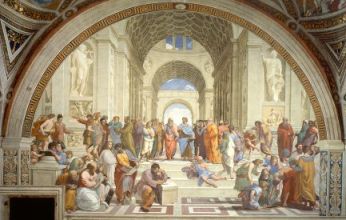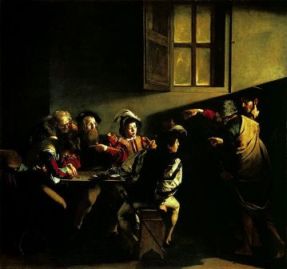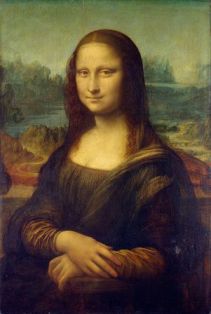The Renaissance was a period of time from the 14th to the 17th century in Europe.
This era bridged the time between the Middle Ages and modern times.
The word "Renaissance" means "rebirth".
The Renaissance was a time of "coming out of the dark". It was a rebirth of education, science, art, literature, music, and a better life for people in general.
Was called the Dark Ages because so much of what was learned earlier was lost with the fall of the Roman Empire.
Many of the new ideas and attitudes that marked the Renaissance times were portrayed in art.
Renaissance art is often divided up into two periods:
Early Renaissance (1400-1479) - Artists learned by trying to emulate classical artists focusing on symmetry and creating the perfect form. This era featured such artists as Giotto, Masaccio, and Donatello.
High Renaissance (1475-1525) - A rising interest in perspective and space gave the art even more realism. Great artists such as Michelangelo, Leonardo da Vinci, and Rafael flourished during this period.
Change of Subjects
In the Middle Ages the subject of almost all European art was religion, specifically Christianity and the Catholic Church. Although Renaissance artists continued to paint religious paintings, they also branched out to other subjects including Greek and Roman mythology, historical subjects, and portraits of individuals. They also focused on the details of everyday life.

School of Athens by Raphael
featured philosophers such as Plato, Aristotle, and Socrates
Realism
One of the big changes in art was to paint and sculpt subjects realistically. This is called realism and involves a number of techniques that make the subjects and background look like they would in real life. This also meant giving the subjects more emotional qualities.
New Techniques and Styles
Many new techniques were introduced during the Renaissance. These techniques helped to enhance the quality and realism of the art.
Perspective - perspective is drawing or painting a picture such that it looks like there are three dimensions. It gives the illusion that some objects in the painting are further away than others.
Balance and Proportion - Drawing subjects such that they are the correct size when compared to each other.
Use of Light and Dark - Many artists starting using light and shadows in their works to add drama, perspective, and timing to their art.

The Calling of Saint Matthew by Caravaggio
Caravaggio used light and shadow to create drama
Sfumato - This was a technique used by Leonardo da Vinci to add additional perspective and dimension to paintings. It was a way of blurring the lines between subjects. This technique was used in Leonardo's Mona Lisa.

The Mona Lisa by Leonardo da Vinci used the sfumato technique
Foreshortening - Another technique that added perspective and depth to paintings, foreshortening is a way of shortening lines to give the illusion of depth.
More information found on; https://www.ducksters.com/history/renaissance_art.php
No comments:
Post a Comment